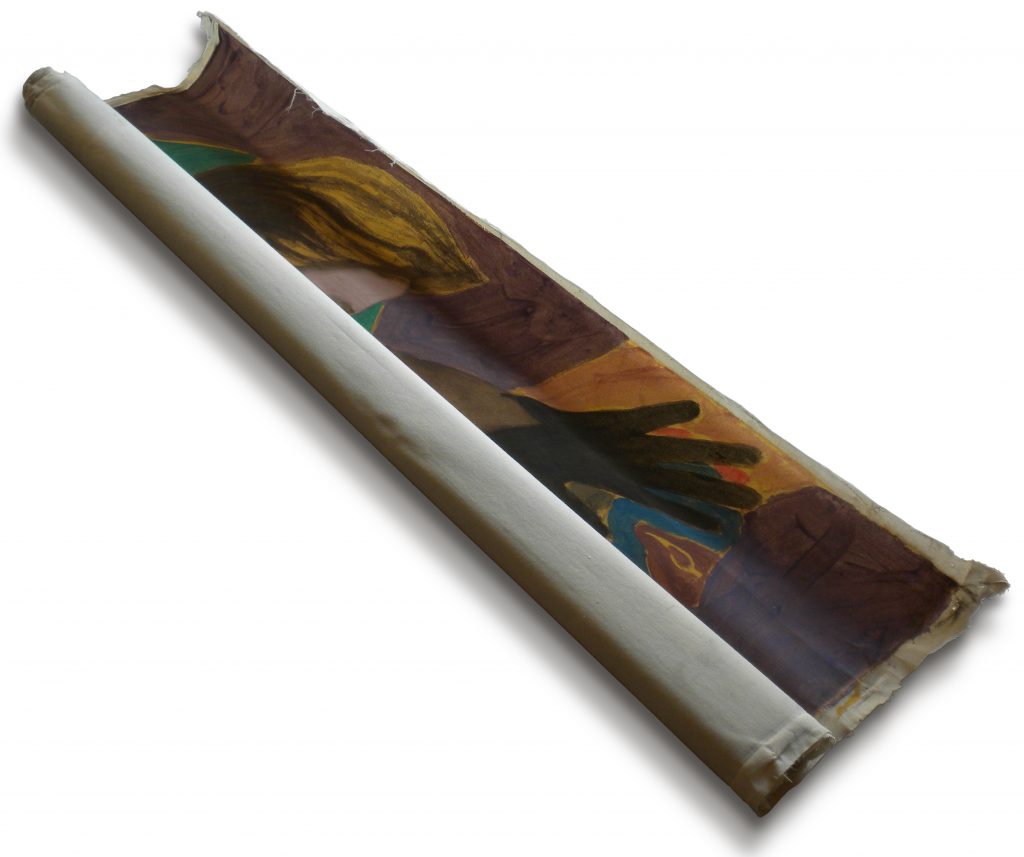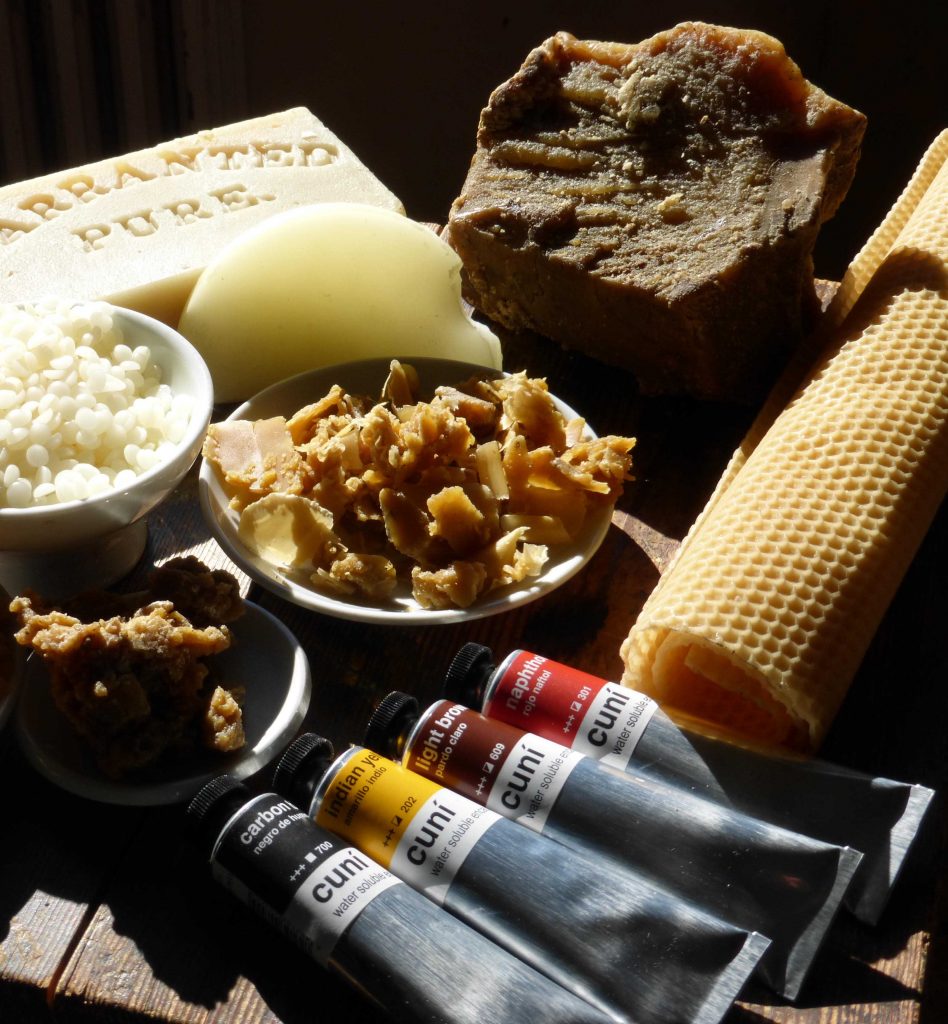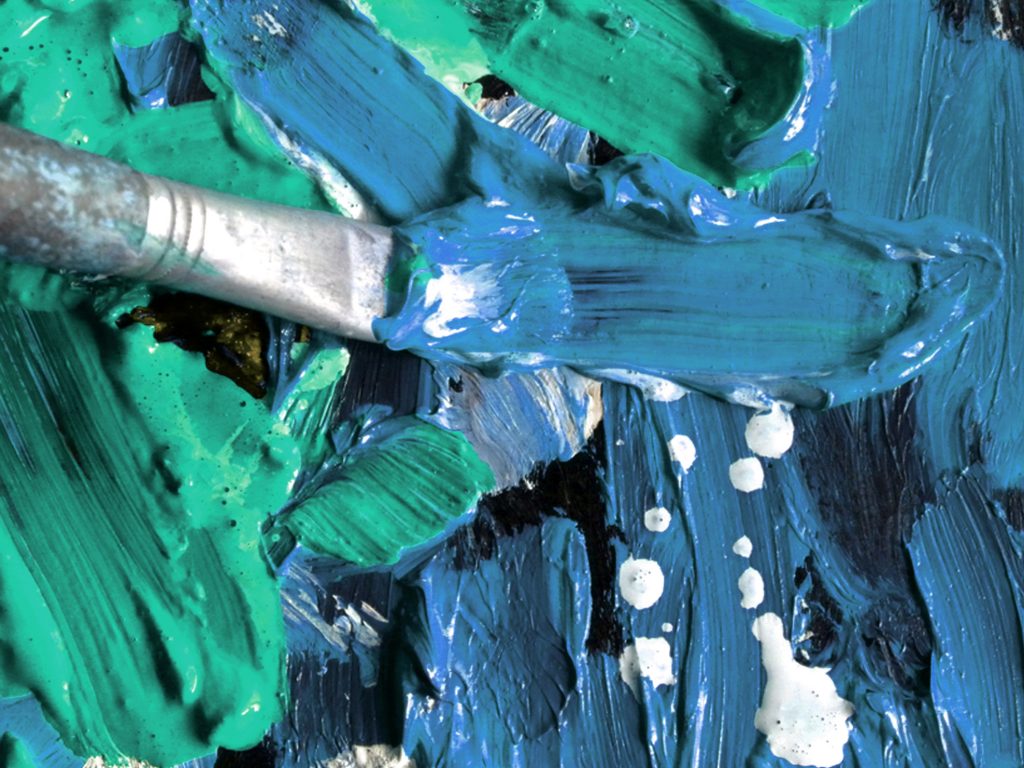
Flexibility
Paint flexibility allows to roll paintings on canvas for transport and storage.

Compatibility with warm encaustics
Cuní colours can be used on and under warm encaustic paintings, and they can also be heated. As the melting point of Cuní’s water soluble encaustic paint is higher than of the warm encaustics, uncontrolled effects can arise when heating Cuní colours applied on top of conventional encaustic colours, as the base can melt while the top layer is still unfused.

Compatibility with other media
Cuní water soluble encaustic paint can be blended with acrylic paint, oil paint (both conventional and water-mixable), watercolour, casein and egg, glue and gum tempera colours and media. They can be applied on paintings done in any of these materials. In some cases when the water soluble encaustic stroke applied is very diluted, it can slip on the other material, thus requiring the application of a higher viscosity layer. Acrylics, oils, egg temperas and caseins can be applied on water soluble encaustic paintings.

Conservation
Due to the paint’s heat sensitivity, it is advisable to store tube colors in a cool place, avoiding overexposure to heat during summer. Stored in this way, under optimal conditions, closed paint containers can be conserved for years. No conserving agents or stabilizers are used in the paint formulation

Toxicity
The paint medium is composed of nontoxic products, accepted in cosmetics and food. No hazardous solvents are required.

Cleaning of brushes and equipment
Brushes and equipment can be cleaned up with soap and water only.

Durability
Water-soluble encaustic paint demonstrates high durability, as evidenced by the state of conservation of Roman artworks painted with this technique, as well as by paintings completed by José Cuní more than fifty years ago.

Varnishing
Paintings can be varnished with varnishes suitable for oil and acrylic colours.
Surface hardness
Wax is a soft material. Therefore, water-soluble encaustic has low scratch resistance, and works require special care when handling, packing, and storing. It is advisable to place a soft protective layer between works during storage. Works should not be piled in order to avoid impasto flattening. When high resistance to scratching is required, it is necessary to varnish the painting.

Finishing
Finish by brushing is especially appropriate, to highlight the extraordinary quality of the beeswax, providing a soft sheen and a waxy luster extremely pleasing to the contemplation of the painting. Brushing also increases water resistance of the paint surface.

Supports
Wall, board, canvas, and paper. Can also be applied on other materials such as ceramic, metal, plastic or glass.
Primers
Water-soluble encaustic is a multi-support paint, with great performance on both oil primers and acrylic or glue gesso.

Uniformity of finish
Great homogeneity of brightness and luster between thick and diluted brush strokes can be reached, allowing uniformity of finish without need of varnishing.

Foam
Despite its content of emulsifiers, paint does not contain anti-foaming agents, allowing the occurrence of suggestive crater formations characteristic of ancient encaustics. Such formations occur when the paint is applied in quick and energetic strokes and are part of the ample repertoire of visual effects open to water-soluble encaustic.

Glaze
Paint can be diluted with larger amounts of water to obtain brush strokes that are very transparent but with great intensity and body. Clean tones are achievable, comparable only to watercolor.

Impasto
It is possible to create thick impastos without noticeable change in shape or volume during drying. The paint surface faithfully maintains the trace of the stroke.

Versatility
Exceptional response to impasto and glaze, providing maximum control over the art work and enabling the artist to achieve new plastic effects.

Heat setting
Uncured paint has limited wet scrub resistance, especially in thick impastos. This resistance increases when heat is applied to dry paint. Heat can be applied with an air gun or a hair dryer, taking care not to leave the heat source too close to the work, in order to avoid color melting. When painting on lower layers is required, heat can be applied to the underpainting to increase its scrub resistance. This application can also be done on fresh paint, without having to wait until complete water evaporation. Underpainting wet scrub resistance also increases when brushed with a soft brush.

Drying
The drying of Cuní paints occurs in two different stages. In the first stage the paint dries rapidly without skin formation as their water content evaporates, making the paint film touch-dry. After this first drying, the paint layer can be reopened by rubbing it with a wet brush or pouring or spraying water and mixing it with a palette knife. During the second stage of drying occurs the paint curing due to internal reactions between its components. This is a long process that will take several weeks for thin films and even years for thick paint films. Once the paint is cured, it is no longer reworkable.

Thinner
Cuni colours are thinned with water. The paint comes out of the tube thick and at full colour strength but can be thinned all the way to the consistency of water colors. The exceptional water solubility of the paint allows easy handling and cleaning, providing intense diluted brushstrokes and clean tones.

Optical qualities
Colours offer high strength and depth due to the outstanding optical qualities of the beeswax. The lack of oxidation in wax allows colours to maintain their chromatic characteristics over time.

